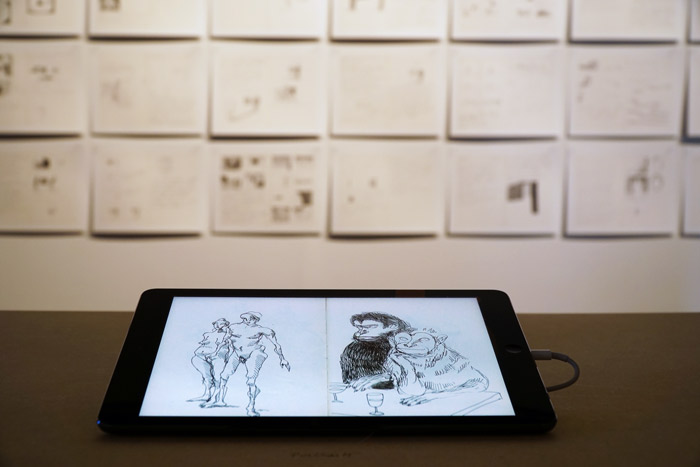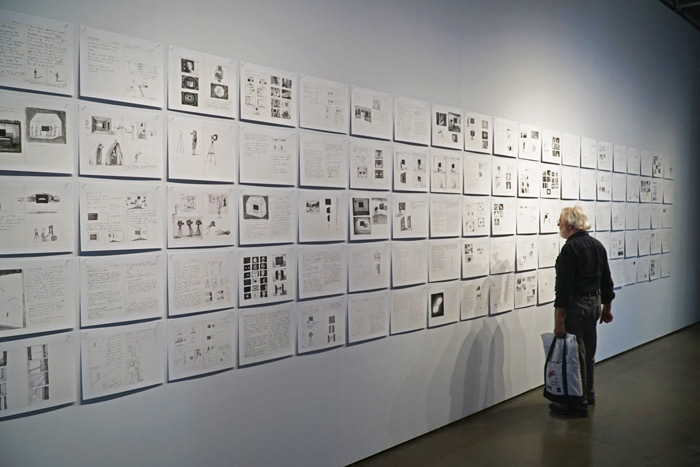Walking into The Whole and its Parts (in French, Le Tout et la Partie) is entering Michèle Lemieux’s grayscale dream world of sketches and animations. Earlier this year, her film, Here and The Great Elsewhere (2012), was shown at the Canadian Culture Centre in Paris. Her exhibit, now at the Université de Québec à Montréal (UQÀM) Centre de Design, allows visitors to explore the film’s preliminary sketches and visual experiments. The exhibition is accompanied by a publication as well as a soundscape of 25 musicians created by New York composer Melissa Grey.

The short film exhibits the comforts of individual routines and living spaces, as well as the effects of leaving them. The film was created entirely through a pinscreen and the story shows not only Lemieux’s technical mastery, but also her creative dialogue with the audience.
The pinscreen is a remarkable feature of the animated film community. Developed in 1931 by Alexander Alexeïeff and Claire Parker, the machine is installed within a dark studio for animation purposes. Lemieux used her own pinscreen to create her film, a method that is both efficient and precise. The metal frame holds 240,000 tubes merely by pressure. When one presses against the back with their hand or an object, the pins stick out of the tube and create a shadow. Lighting from the side illuminates the pinscreen so that the pins create a shadow onto the board. The camera placed in front of the screen is unable to see the pins, only the array of grey shadows created. Using everyday household items, such as light bulbs, the artist is able to project silhouettes onto the pinscreen—ideal for animation.
An illustrator, filmmaker, and professor at the UQÀM, Michèle Lemieux has taught illustration for over 20 years. Previously, Lemieux worked with children’s illustrations before transitioning to animated film. Working exclusively in black and white, many of Lemieux’s drawings are similar to those of Tim Burton. Her style is a cluttered collection inspired by various children’s illustrators such as Shel Silverstein. The mixture of these influences creates a mysterious, yet youthful, atmosphere.
Lemieux’s sketchbook work for animated films from 2003 to 2012 is displayed on one lightened wall. Directly across the room are iPads showcasing various pages of her books. With this, the viewer is able to observe the development of her style—from grotesque mutant figures to nature scenes drawn in only a few crude lines. Behind a hidden corner, a dimly lit wall shows Lemieux on three consecutive screens; each displays real-time footage of her working on the film. Her patience, frustration, and meticulousness are apparent as she works on a pinscreen. Lemieux’s presence within the exhibit is emphasized with another footage piece—a recording of her interacting with students during a lecture.
For two-and-a-half years, Lemieux was devoted to this pinscreen project. Informational excerpts explain that the exhibit—in addition to serving as an introduction to Lemieux’s creative process—is an attempt to heighten viewer’s understanding of drawing in the animation world. By focusing on the pinscreen, viewers can learn the process of using dated tools in what is commonly seen as a ‘modern’ art form.
On display from Sept. 23 until Nov. 6 The Whole and its Parts: Michèle Lemieux, from Drawing to Animation can be viewed at 1440 Rue Sanguinet Wednesdays to Sundays from 12-6 p.m.








